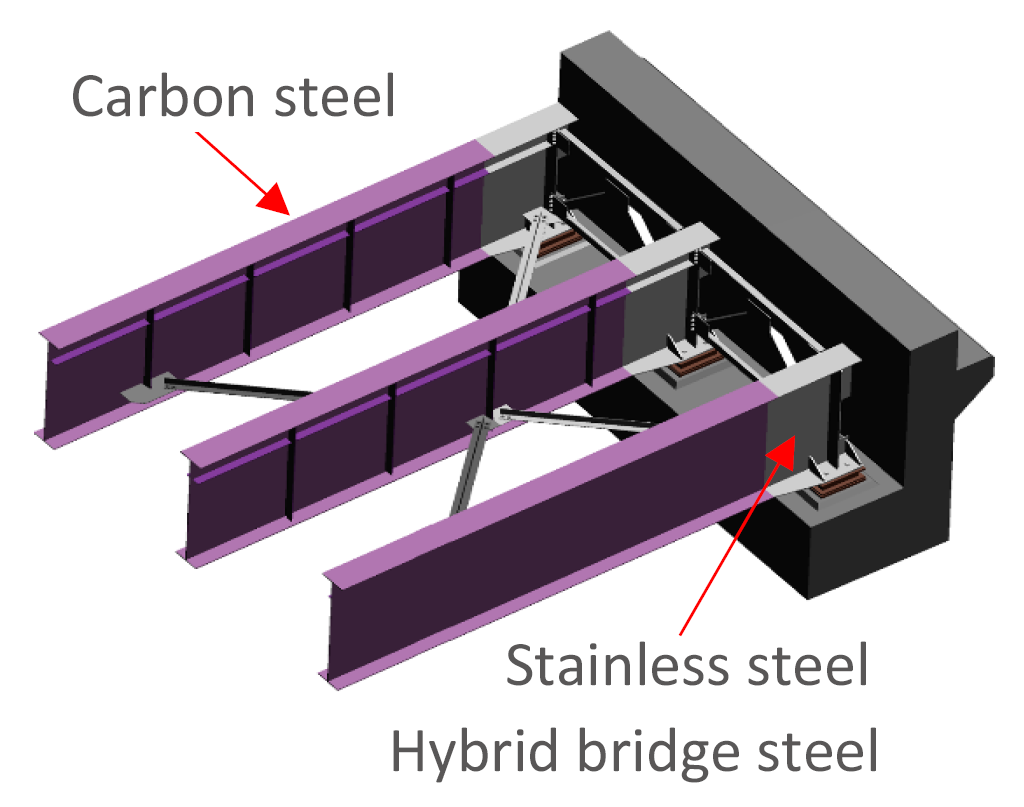2022.09.27
CTI Engineering Co., Ltd. has confirmed the feasibility of hybrid steel bridges using stainless steel, reducing life cycle costs.
Technology & Research
Together with the Professor Tetsuhiro Shimozato and others at the University of the Ryukyus, CTI Engineering has confirmed the feasibility of hybrid steel bridges and the possibility of reducing life cycle costs by using stainless steel for the ends of the girders.
Together with the Professor Tetsuhiro Shimozato and others at the University of the Ryukyus, CTI Engineering has confirmed the feasibility of hybrid steel bridges and the possibility of reducing life cycle costs by using stainless steel for the ends of the girders.
[Features of highly durable hybrid steel bridges]
To help reduce life cycle costs, we developed a highly durable hybrid steel bridge that uses stainless steel for the girder ends to deal with the highly corrosive environment steel bridges face. The advantages of this hybrid steel bridge are as follows:

Advantage 1: Eliminates the need for repainting due to corroded girder ends
Advantage 2: Because the effects of girder end corrosion are eliminated, maintenance of cramped, difficult to inspect girder ends is easier
[Verifying strength properties and anti-corrosive properties]
To verify the strength properties of the hybrid steel bridge, we measured the corrosion resistance of stainless steel and the strength properties of the welding joints in carbon steel. The results show strength that is equal or superior to that of carbon steel. On the topic of corrosion resistance, painting the stainless-steel end with the joint results in high durability as a countermeasure against bimetallic corrosion, but at high cost. Therefore, we measured the corrosion resistance of unpainted ends with the goal of clarifying the need for painting as part of life cycle costs.
[Future developments]
Going forward, we will continue joint research with the university on other joining methods and corrosion properties based on the fundamental strength properties data for stainless steel and carbon steel joints. We will also take into consideration not only stainless steel, but also the appropriateness and cost of this method for use with new materials in efforts to further toughen bridges, which are a key part of fundamental infrastructure.
Note: This research was conducted under the direction of Professor Tetsuhiro Shimozato of the University of the Ryukyus and in part with the cooperation of the Japanese Society of Steel Construction.